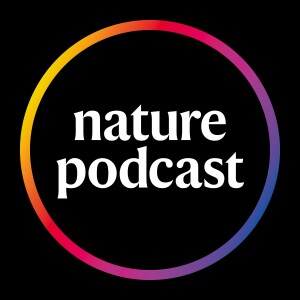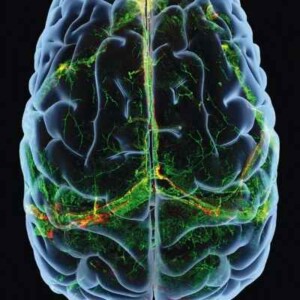In this episode:
00:49 What caused the Universe to become fully transparent?Around 13 billion years ago, the Universe was filled with a dense ‘fog’ of neutral hydrogen that blocked certain wavelengths of light. This fog was lifted when the hydrogen was hit by radiation in a process known as reionisation, but the source of this radiation has been debated. Now, researchers have used the JWST to peer deep into the Universe’s past and found that charged particles pouring out from dwarf galaxies appear to be the the main driver for reionization. This finding could help researchers understand how some of the structures we now see in the Universe were formed.
Research article: Atek et al.
08:46 Research Highlights
Ancient inscriptions could be the earliest example of the language that became Basque, and how researchers etched a groove… onto soap film.
Research Highlight: Ancient bronze hand’s inscription points to origins of Basque language
Research Highlight: Laser pulses engrave an unlikely surface: soap films
11:05 Controlling cholesterol with epigenetics
To combat high cholesterol, many people take statins, but because these drugs have to be taken every day researchers have been searching for alternatives. Controlling cholesterol by editing the epigenome has shown promise in lab-grown cells, but its efficacy in animals was unclear. Now, researchers have shown the approach can work in mice, and have used it to silence a gene linked to high cholesterol for a year. The mice show markedly lowered cholesterol, a result the team hope could pave the way for epigenetic therapeutics for humans.
Research Article: Cappelluti et al.
18:52 The gene mutation explaining why humans don’t have tails
Why don’t humans and other apes have a tail? It was assumed that a change must have happened in our genomes around 25 million years ago that resulted in the loss of this flexible appendage. Now researchers believe they have pinned down a good candidate for what caused this: an insertion into a particular gene known as TBXT. The team showed the key role this gene plays by engineering mice genomes to contain a similar change, leading to animals that were tail-less. This finding could help paint a picture of the important genetic mutations that led to the evolution of humans and other apes.
Nature News: How humans lost their tails — and why the discovery took 2.5 years to publish
Research Article: Xia et al.
News and Views: A mobile DNA sequence could explain tail loss in humans and apes
Subscribe to Nature Briefing, an unmissable daily round-up of science news, opinion and analysis free in your inbox every weekday.
Hosted on Acast. See acast.com/privacy for more information.
More Episodes
The troubling rise of facial recognition technology
 2020-11-18
2020-11-18
Audio long-read: The enigmatic organisms of the Ediacaran Period
 2020-11-13
2020-11-13
Revealed: the impact of noise and light pollution on birds
 2020-11-11
2020-11-11
A powerful radio burst from a magnetic star
 2020-11-04
2020-11-04
Talking politics, talking science
 2020-10-30
2020-10-30
Politics of the life scientific
 2020-10-29
2020-10-29
A brief history of politics and science
 2020-10-28
2020-10-28
Lab–grown brains and the debate over consciousness
 2020-10-28
2020-10-28
The science behind an 'uncrushable' beetle’s exoskeleton
 2020-10-21
2020-10-21
Superconductivity gets heated
 2020-10-14
2020-10-14
Audio long-read: What animals really think
 2020-10-09
2020-10-09
Trump vs. Biden: what's at stake for science?
 2020-10-07
2020-10-07
Greenland's ice will melt faster than any time in the past 12,000 years
 2020-09-30
2020-09-30
After decades of trying, scientists coax plastic particles into a diamond-like structure
 2020-09-23
2020-09-23
Genes chart Vikings' spread across Europe
 2020-09-16
2020-09-16
A new way to cool computer chips — from within
 2020-09-09
2020-09-09
Revealed: A clearer view of how general anaesthetics actually work
 2020-09-02
2020-09-02
The challenge of reproducing results from ten-year-old code
 2020-08-26
2020-08-26
3D-printing some of the world's lightest materials
 2020-08-19
2020-08-19
The chemical that turns locusts from Jekyll into Hyde
 2020-08-12
2020-08-12
Create your
podcast in
minutes
- Full-featured podcast site
- Unlimited storage and bandwidth
- Comprehensive podcast stats
- Distribute to Apple Podcasts, Spotify, and more
- Make money with your podcast
It is Free
- Privacy Policy
- Cookie Policy
- Terms of Use
- Consent Preferences
- Copyright © 2015-2024 Podbean.com



 iOS
iOS Android
Android


